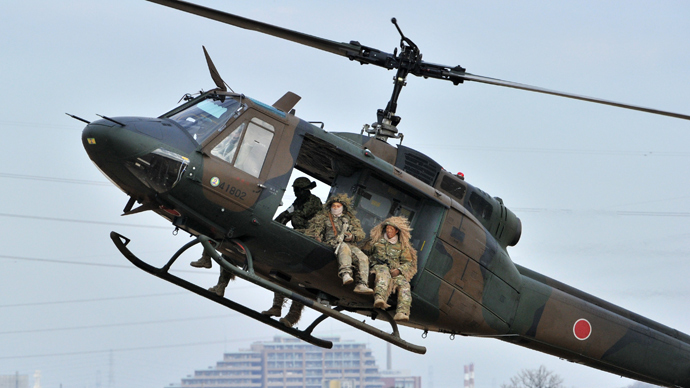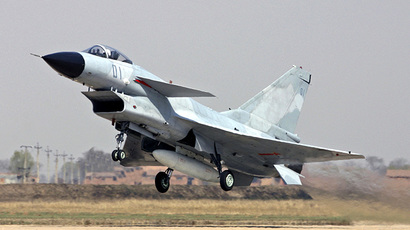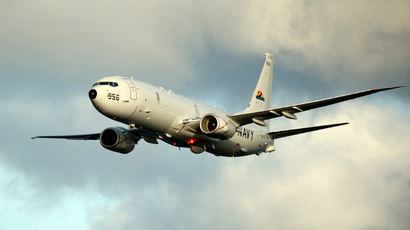Japan holds military drill as S. China Sea islands dispute widens

Japanese paratroopers recaptured an island from an enemy in a wargame as its Defense Minister vowed to defend a disputed East China Sea territory. China’s ships sailed near the contested islets as Beijing reportedly expanded its air defense zone.
Tokyo’s military on Sunday held a military drill dubbed “Island Defense,” in which the country’s elite airborne troops simulated the retaking of a remote island from an enemy nation.
The plot for the annual drill, which took place at an exercise field east of Tokyo, stayed the same for the second year in a row as the dispute over the group of tiny islets in the East China Sea, claimed by China, Taiwan and Japan, showed no signs of resolution.

Japanese Defense Minister Itsunori Onodera, who was overseeing the drills, vowed to protect the territory around the islands, which Japan considers to be its own.
“We can never overlook China’s repeated entries into our territorial waters. In addition to diplomatic efforts, we will cooperate with the Coast Guard to securely defend our territory and waters around the Senkaku islands,” Onodera said.
The islands, which are known as Diaoyu in China and as Senkaku in Japan, have again found themselves in the middle of regional tension less than two weeks into the New Year. Three Chinese patrol ships briefly entered the disputed waters early Sunday, the first time since controversial fishing rules approved by China’s southern Hainan province took effect January 1.
The fishing rules require foreign fishing vessels to obtain approval before entering the disputed waters in the South China Sea, as the local government maintains they are under its jurisdiction.

Both the boats’ venture and the reminder of the unilaterally imposed fishing law sparked angry official reactions from Japan and its ally the United States.
“Setting something like this unilaterally, as if you are treating them as your own territorial waters, and imposing certain restrictions on fishing boats, is not something that is internationally tolerated,” Onodera said, claiming that China is “threatening the existing international order.”
Washington earlier branded the fishing rules “provocative and potentially dangerous,” prompting a rebuttal from the Chinese Foreign Ministry on Friday.
Patrol ships from China and Japan have often shadowed each other in the disputed area, since Tokyo moved to nationalize its control over three of the islands, with the state buying them from a Japanese family for 2 billion yen in September 2012.

Beijing considered the move to be a breach of its territorial sovereignty, as it holds that the islands were returned to China in 1945, half a century after their annexation by Japan in an earlier Sino-Japanese War.
After World War II, the US took control of the islets, until the US Senate voted to return them to Tokyo in 1972. The decision followed a discovery of potential oil and gas reserves in the vicinity of the islands by a UN commission in 1969. Both Chinese and Taiwanese governments also declared their ownership of the territories in 1972.
Tensions over what are believed to be resource-rich territories have soared in recent months, particularly after China announced the creation of an air defense identification zone (ADIZ) covering a large swathe of the East China Sea, including the disputed isles.
Both Japan and its ally the US strongly condemned the creation of the Chinese air defense zone, which was announced in November, ostensibly sending their ships, jets and bombers to pass through the territory. China also scrambled its fighter jets to shadow the military aircraft passing through the area and kept patrolling the nearby waters.
A report Sunday by Japan’s Asahi Shimbun newspaper, however, suggested that Beijing was serious on taking a hard-line stance over the disputed territories, expanding its defense zone even farther toward Japan.
In response to an inquiry from the Japanese newspaper, China’s Defense Ministry confirmed the eastern tip of the zone is just 130 kilometers from the Japanese island of Kyushu. This makes it as close to Japan as Tokyo’s own declared air defense zone is to China. The report suggests the newly decided Chinese identification zone has been revised since its introduction on November 23.














